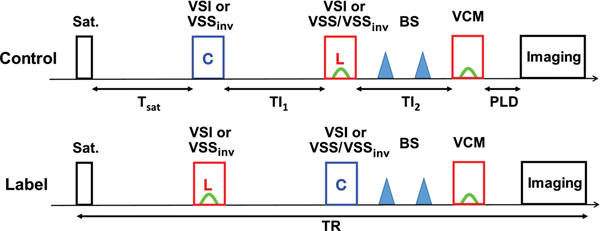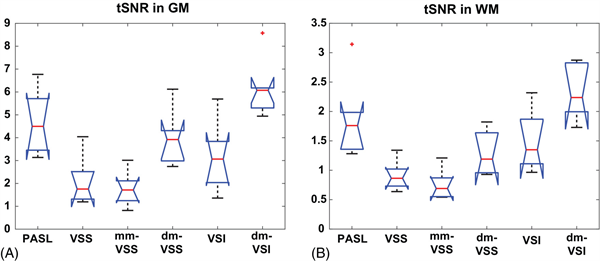Dual Mode Velocity Selective Arterial Spin Labeling (Vsasl)
Full Description
Background
Velocity selective arterial spin labeling (VSASL) is a category of arterial spin labeling (ASL) methods that label arterial blood based on its velocity. VSASL is insensitive to arterial transit time (ATT) effects and has a signal-to-noise ratio (SNR) advantage when arterial blood supply is significantly delayed. VSASL can be performed with VS saturation (VSS) or VS inversion (VSI) labeling. Despite the advances in VSASL methods two major challenges remain:
- labeling efficiency is relatively low; and,
- artifacts compromise the robustness and accuracy of VSASL.
Technology
Prof. Jia Guo has developed a novel, dual-module labeling strategy (dm-VSASL) to address the major challenges presented above. dm-VSASL is applicable with VSS and VSI labeling modules and their combinations. The two modules are designed to have more balanced gradient configuration under the label and control conditions to compensate for eddy current and diffusion attenuation effects.

The new dual-module VSASL scheme, where the VS modules under the control conditions are labeled with C (blue) and the ones under the label condition are labeleed with L (red) with green shapes representing flow sensitive gradient pulses. The pulse sequence on the top is for acquiring a control image and the one on the bottom is for acquiring a label image. TI1 and TI2 are the time between the 2 VS modules and between the second VS module and vascular crushing module (VCM). Other abbreviations are BS - background suppression, PLD - post labeling delay and VSSinv - velocity selective saturation that can invert stationary magnetization.

Comparison boxplots of the averaged temporal SNR in the gray matter (GM) and white matter (WM) regions of interest.
Advantages
The unique aspects of this technology - dm-VSASL based MRI imaging solution are:
- Insensitive to transit delay artefacts that challenge conventional ASL methods.
- Doubles the tempoal SNR of perfusion imaging compared to the state of the art VSASL methods.
- Significantly reduces artefacts from cerebrospinal fluids and provides a more accurate perfusion measurement.
Benefits
- Significantly improved SNR and quantification accuracy.
- Reduction of imaging cost by reducing scan time.
- Increased throughput in hospital and imaging labs.
- Improves diagnostic accuracy and confidence.
State of Development
The dm-VSASL technology has been successfully implemented into a prototype pulse sequence on an MRI platform and tested on healthy human subjects. The preliminary in-vivo data confirms the temporal SNR improvement.
The team is actively seeking collaboration partners to further the pulse sequence developmnt and for commercial ready development.
Suggested uses
Non-invasive, perfusion imaging using MRI machines.
Related Materials
Information
- Please review all inventions by Prof. Guo and team at the University of California.
- Please visit Prof. Guo's profile page to learn more about this research.
Patent Status
| Country | Type | Number | Dated | Case |
| Patent Cooperation Treaty | Published Application | WO 2023/150468 | 08/10/2023 | 2022-878 |
Contact
- Venkata S. Krishnamurty
- venkata.krishnamurty@ucr.edu
- tel: View Phone Number.
Other Information
Keywords
arterial spin labeling, velocity selective arterial spin labeling, VSASL, MRI, magnetic resonance imaging, ASL
